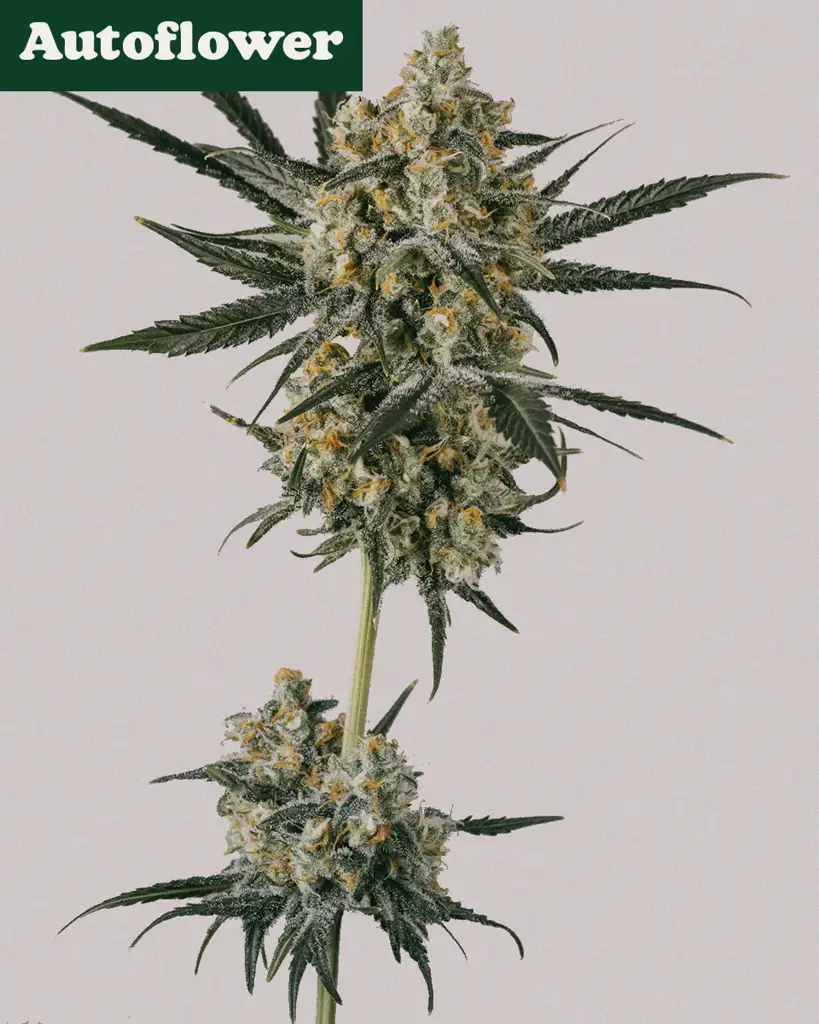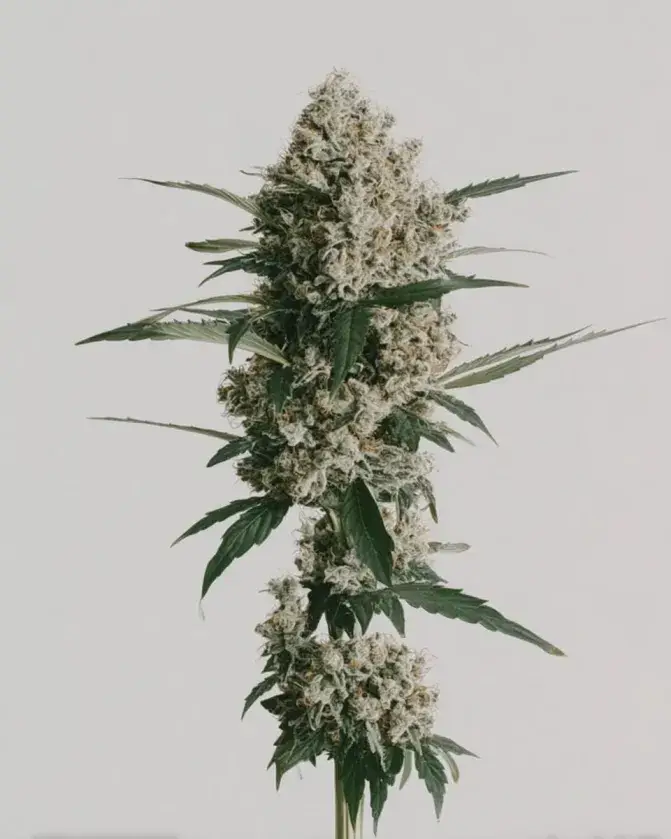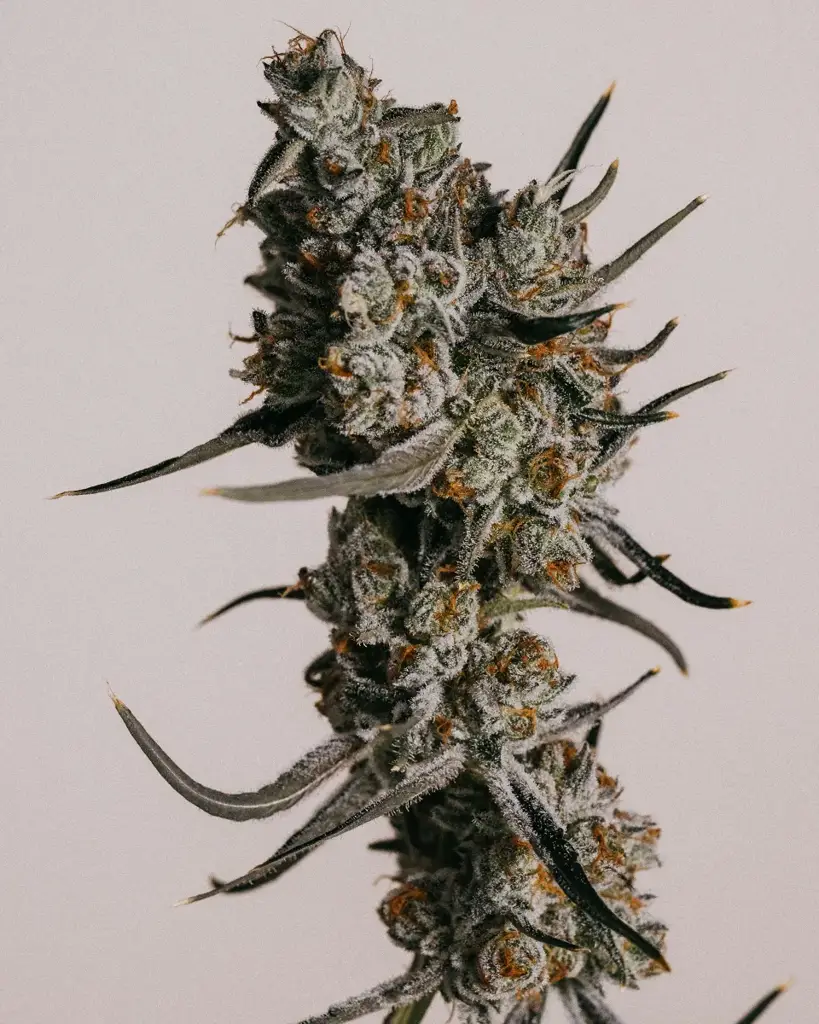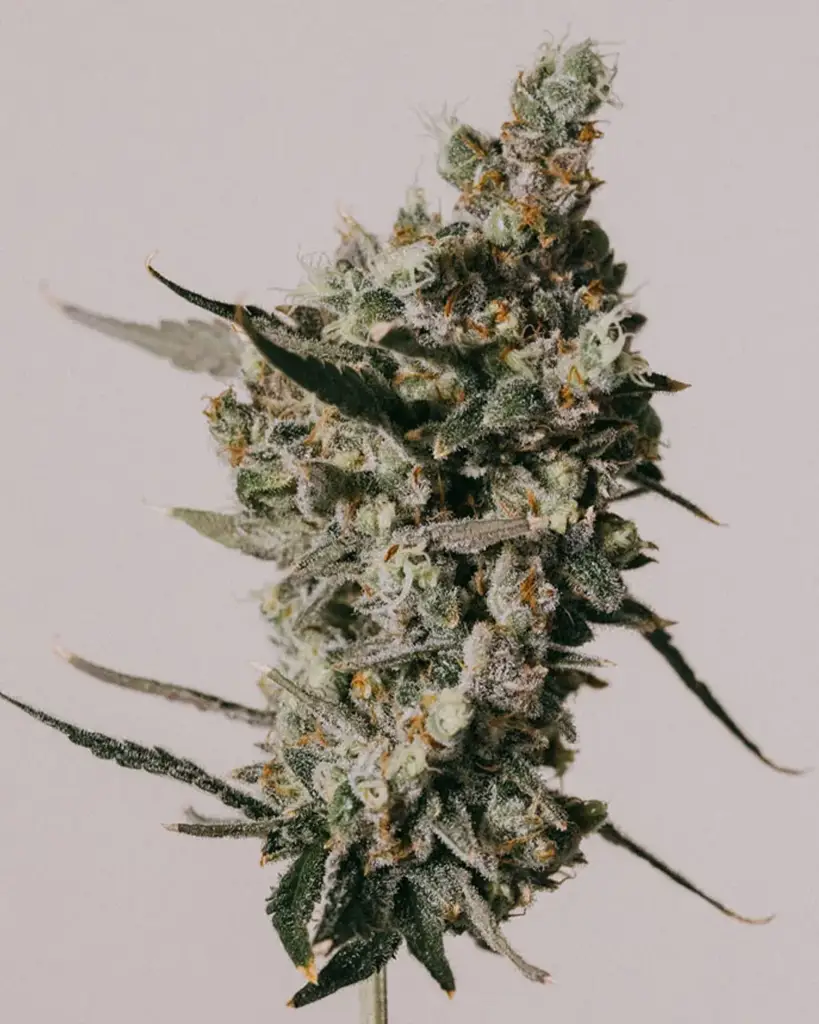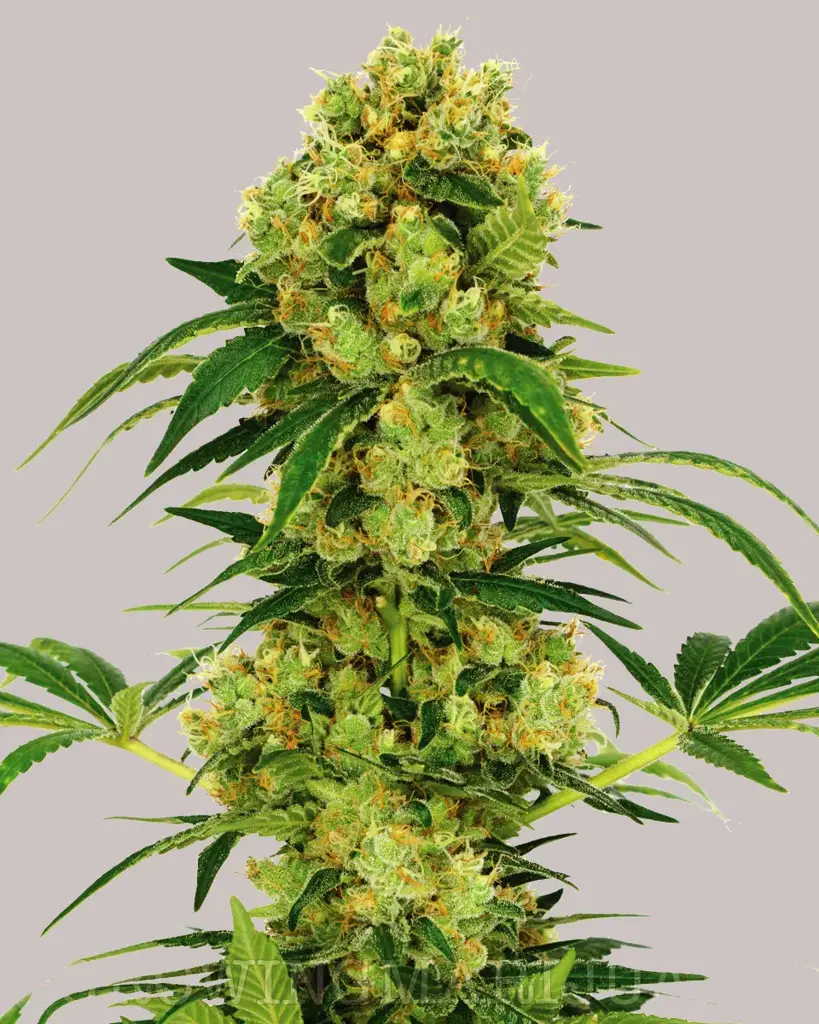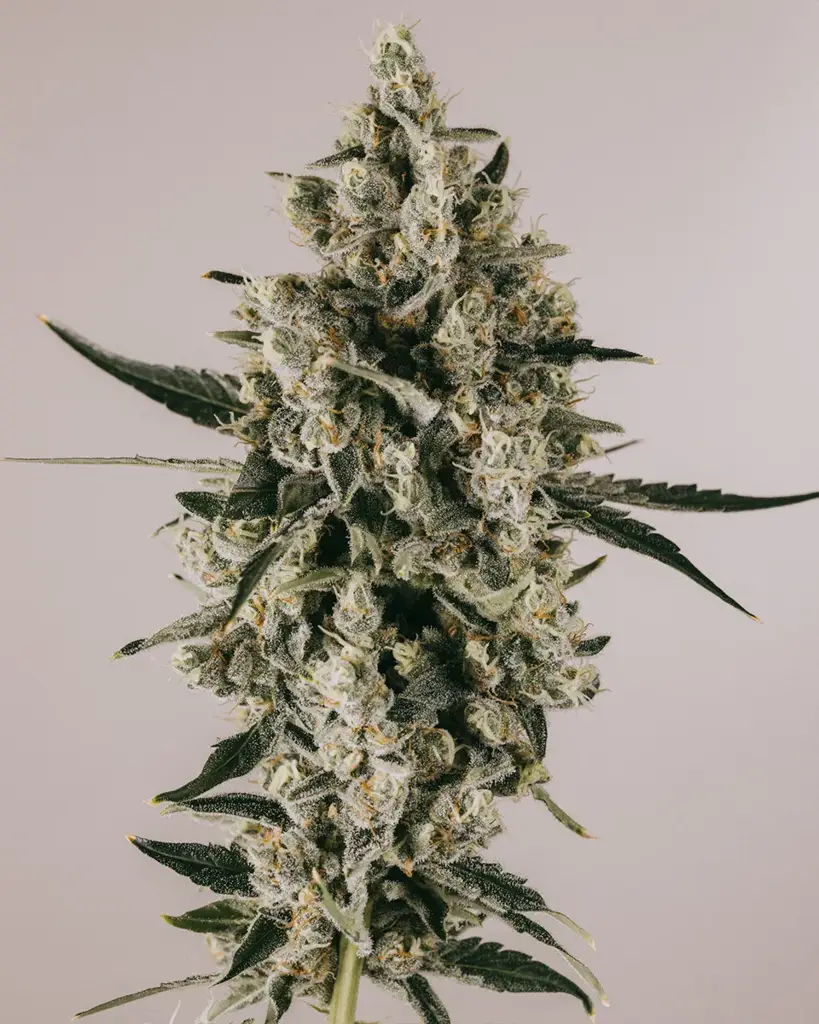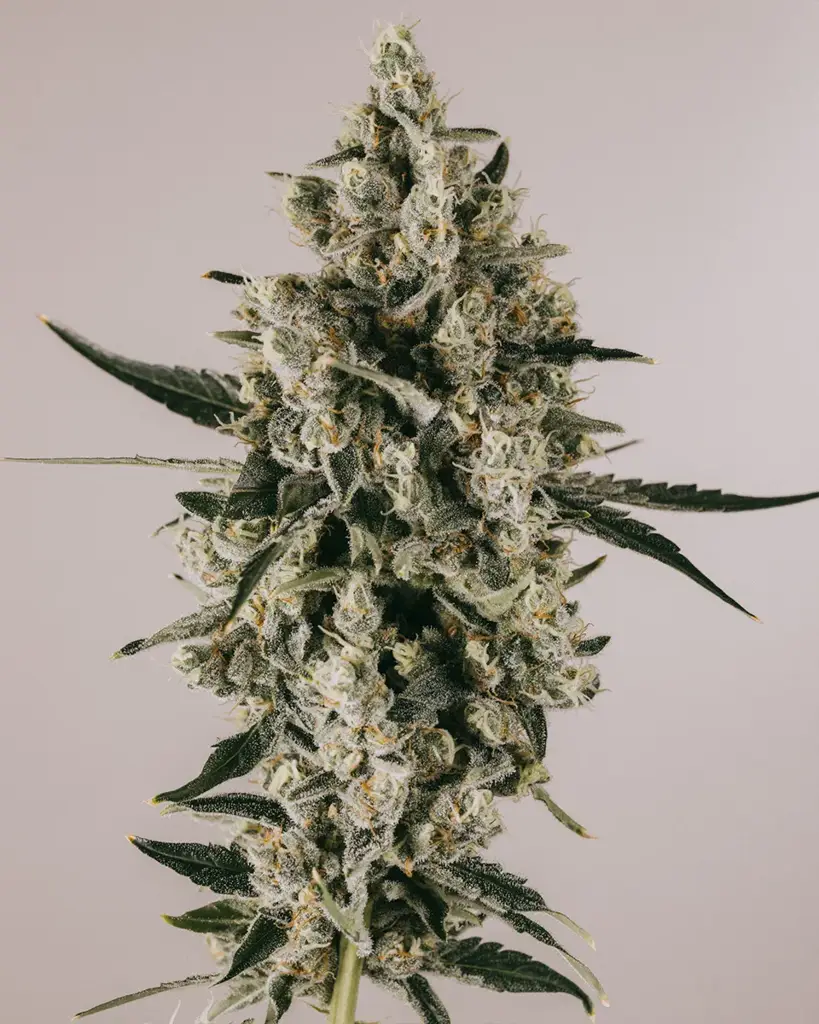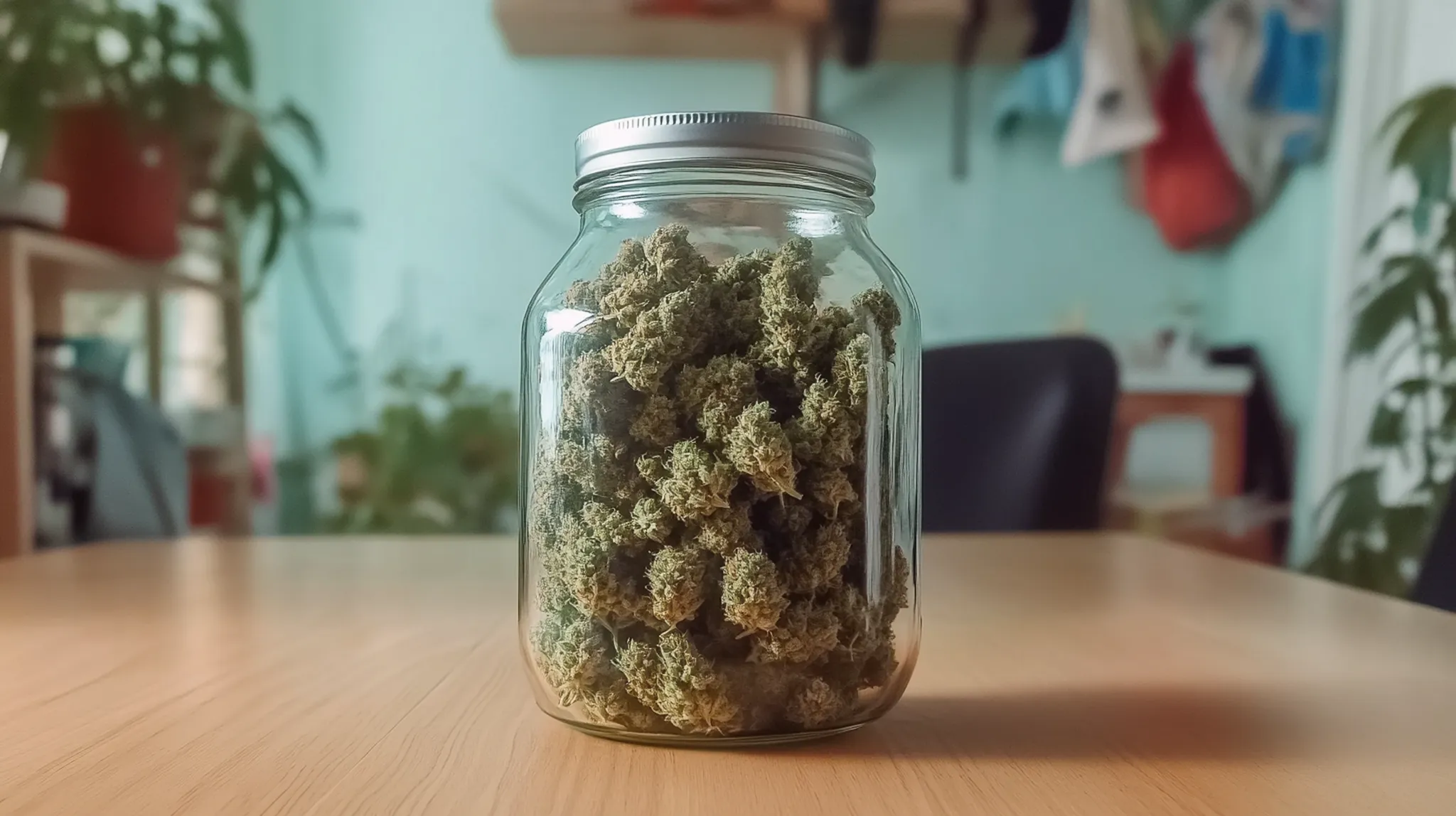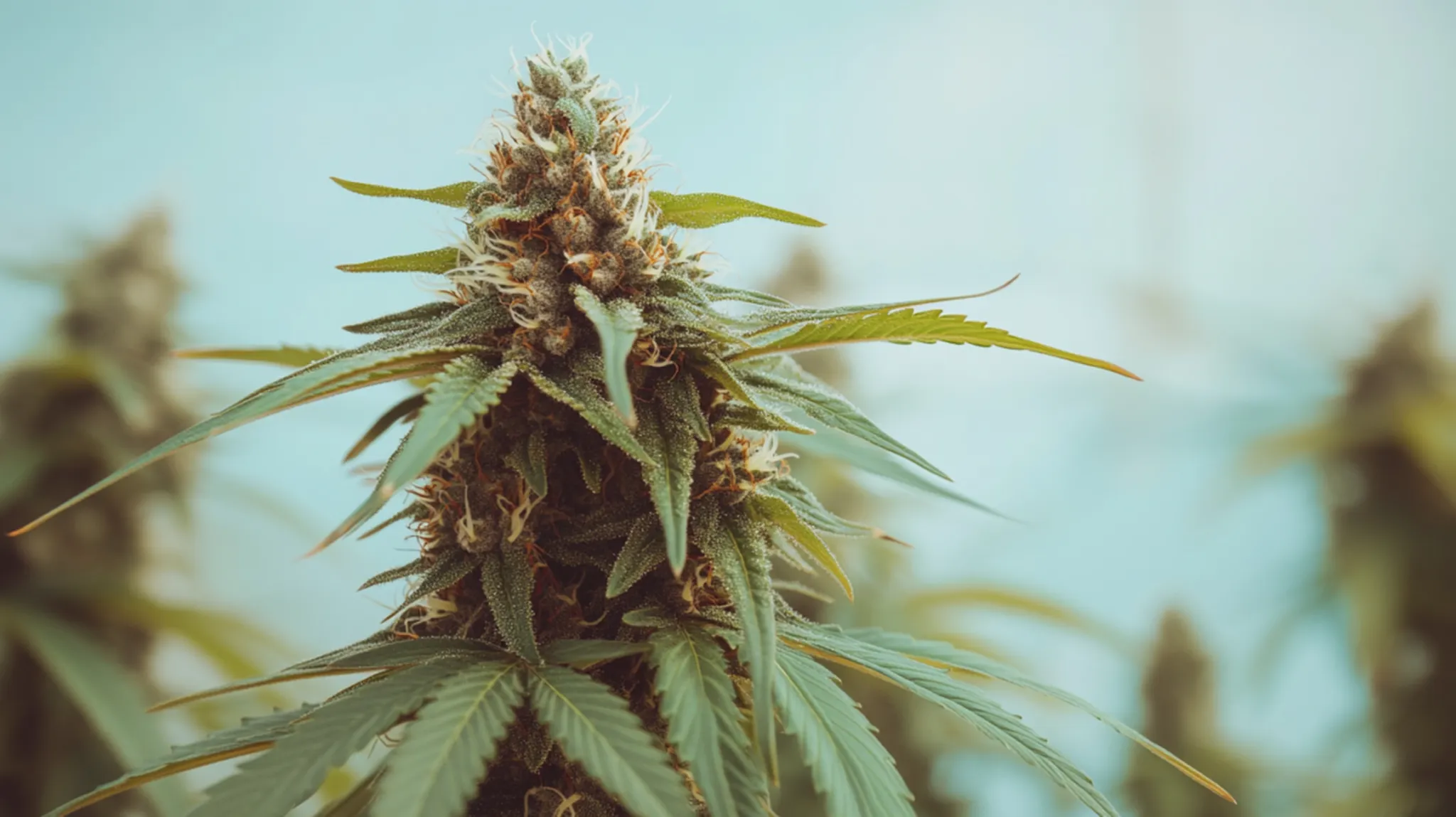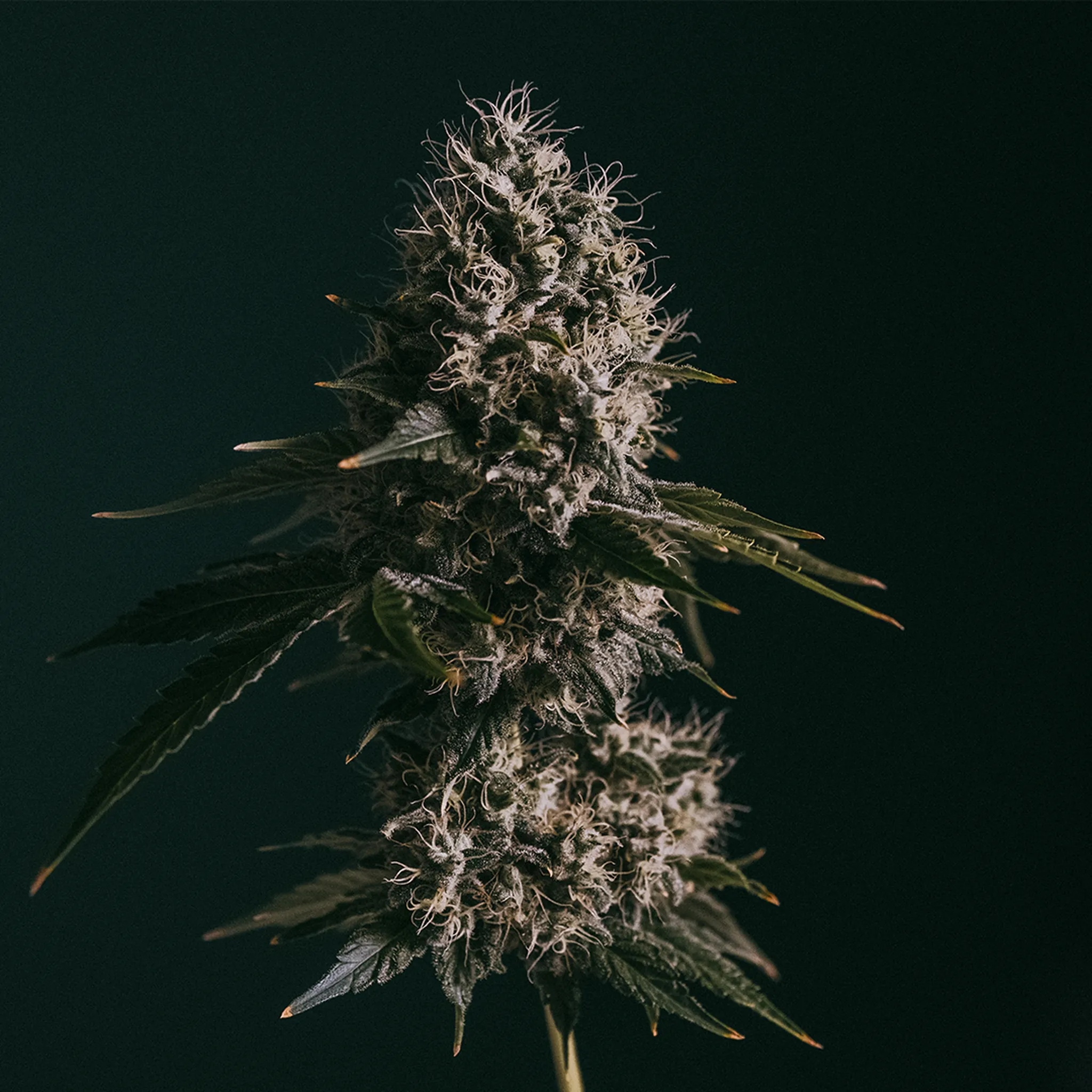
Knowing When to Harvest Your Cannabis
The time has finally come when you can prepare your labeled curing jars in anticipation of the big harvest! Now, before we get into the specific signs and methods for determining cannabis harvest readiness, it's important to understand why timing is such a big deal.
Table of contents
Harvesting at the right time can mean the difference between a good grow and a great one, affecting everything from trichome production, bag appeal, potency, aroma, terpene development, taste, and yield.
The goal here is to help you identify the right moment to “Chop” (harvest) so that your plants are harvested during peak production and your cup-winning buds are the best they can be. Let’s dive into why getting the timing right is so important and making sure you have the perfect harvest for this crop!
Too Long, Didn't Read
Cannabis harvest timing affects potency, yield, aroma, and flavor.
Look for visual cues: trichome color (clear, milky, amber) and pistil changes.
Inspect trichomes with a loupe or microscope to determine peak readiness.
Reduce watering and nutrients before harvest to aid drying.
Flushing the plants with only water may improve smoothness and taste.
Consider progressive cannabis harvesting for uneven maturity.
Proper drying and curing are essential for quality buds.
Harvest timing varies between indica, sativa, and autoflower strains.
Importance of Harvesting Cannabis at the Right Time
Chopping at the right time ensures that your cannabis flowers reach their full potential. Picking too early or too late can impact both the quality and quantity of your buds. When harvested properly, cannabis is at its most potent and flavorful, providing the effects you’re looking for, whether that’s a heady buzz or a mellow body high.
Impact on Potency, Effect, Yield, and Aroma and Flavor Profile
If you harvest cannabis too early, your buds may lack the full potency and depth of aroma they’re capable of achieving, as the terpenes and cannabinoids are not fully developed.
Harvest too late, and you might end up with a more sedative effect than you wanted, as most trichomes will be amber-colored.
Perfect timing also means maximizing your yield—allowing the buds to grow to their full size and potential before they’re ready to come down.
Aroma and flavor peak at just the right moment, so getting the timing right is key for that full sensory experience and those mouth-watering flavors every cannaisseur dreams of.
Our Bestsellers
Signs to Look for When Your Cannabis is Ready for Harvest
Now that you understand why cannabis harvest timing is so important, let’s talk about the specific signs you can look for to determine if your cannabis is ready. There are a few key indicators that can help you pinpoint the perfect moment to chop those lovely plants you’ve been nurturing for all those weeks.
In the Northern Hemisphere, many growers refer to this time of year as "Croptober," as the majority of outdoor cannabis harvests happen around October. Paying close attention to the signs of readiness can help you make the most of this harvest season.
 Overview of Various Visual Cues and Methods for Determining Readiness
Overview of Various Visual Cues and Methods for Determining Readiness
There are several ways to tell if your cannabis is ready for harvest. It’s all about looking for visual cues from the plant—like changes in trichome and pistil colors—and understanding what those changes mean.
By combining these cues with a few simple tools, you can be sure you’re harvesting your weed at the perfect time. Below is a breakdown of the signs to look for, allowing you to be a pro at spotting when it is the pinnacle harvest window.
Trichome Inspection: The Gold Standard
One of the best ways to determine if your cannabis is ready for harvest is by inspecting the trichomes. These tiny, crystal or droplet-like structures contain cannabinoids, terpenes, and other aromatic compounds (VSCs) that give your buds their unique effects and flavor, making them an essential indicator of readiness.

What Are Trichomes and How to Check Them?
Trichomes are the tiny, droplet or mushroom-head-like glands on your buds and leaves that produce and contain all the good stuff—cannabinoids, terpenes, and more.
Their “state of readiness” is one of the best and most accurate ways to know if it is time to grab your knife or garden scissors and get chopping. However, to accurately judge if they’re at peak ripeness, you’ll have to observe them up close and personal.
To get a close-up look at your trichomes, you’ll need either a jeweler’s loupe or a small microscope. With these tools, you’ll be able to clearly see the different stages of trichome maturity, whether they are underripe, ripe, or overripe. There are many of these types of devices available on the market for growers, and they come with a 20x and 50x zoom settings so you can see the magic and wonder up close.

Description of Trichome Stages (Clear, Milky, Amber)
Clear Trichomes: When trichome heads are clear, this means they are at their least mature, and when harvesting at this point, will result in a more cerebral head high with little body effect.
Cloudy or Milky Trichomes: This is the sweet spot for most growers. When the inside of your trichomes is of a silver and cloudy/milky hue, it means they have achieved peak terpene and cannabinoid profiles. Harvesting your cannabis buds now will give you the most desirable effect, flavor, and aroma profile.
Amber Trichomes: Noticing that 15-50% (depending on personal preference!) of your trichomes have an amber or red hue will mean they have become as mature as possible. The effects when smoking buds harvested at this stage can produce a heavy physical effect compared to clear or cloudy/milky trichomes, which can leave you glued to the sofa.
When to Harvest Cannabis: Based on Trichome Colors
Early Harvest for Uplifting Effects: If you prefer a lighter, more uplifting, and cerebral high, then consider harvesting when the trichomes are mostly cloudy or milky (85%) and 15% is still clear. Peak Potency: For the most desirable effect, flavor, and aroma, harvest when the majority of trichomes are milky (85%) and about 15% are amber-colored.
Late Harvest for Body High and Sedative Effects: If you’re after a couch-lock effect, wait until you see a higher ratio of amber trichomes.

Pro-tip: The percentage and description above are a (pretty good) guideline. But, as with a lot of things “cannabis,” there is a lot of personal preference involved as well. Some people like to harvest at different clear/milky/amber ratios simply because that’s the way they like it. Also, the strain you are growing can play a major role…
So, please experiment with what ratio works best for you.
Pistils: Another Reliable Indicator
Pistil Color Changes
Pistils are the small, bright white, fuzzy hair-like structures that cover your plants when growing. When they’re young, pistils are white and straight, but as the plant matures, they darken and turn orange or brown and curl in. This color change can be another good indicator that your plant is getting close to harvest time.

When to Harvest Based on Pistil Color and Appearance
The best time to harvest cannabis based on pistil color is when around 90-100% of the pistils have darkened and curled in. This tells you that the buds have reached peak maturity, and you’ll get the best balance of potency and flavor.
The Difference Between Pistils, Calyxes, Stigmas, and Bracts
Pistils, calyxes, stigmas, and bracts are all parts of the cannabis plant, and it’s easy to mix them up. The pistil is the reproductive part of the flower, and the stigma is the hair-like part of the pistil. Calyxes and bracts are different parts of the bud that hold a lot of trichomes. People often use more general terms like “pistils” because it’s just easier when discussing harvest readiness.
Want High Yields?
Leaf Changes and Overall Plant Appearance
Aside from inspecting the trichomes and pistils, the overall appearance of the cannabis plant can give you important clues about its readiness for harvest. Changes in leaf color and plant health are natural signs that the plant is nearing the end of its life cycle; although the flushing process and cold temperatures will often play a major role in the color pigmentation of the buds and leaves.
Watering and Drying Techniques Near Harvest
As your cannabis gets closer to full maturity, it’s important to think about how you’re watering the plant. Reducing watering in the last week or two can help the plant dry on the vine, which can speed up the overall drying and curing process. For those interested in learning more, check out our article on flushing cannabis plants to understand how removing nutrients at this stage can impact flavor and smoothness.
Yellowing Fan Leaves as a Cannabis Harvest Indicator
As your cannabis plant nears the end of its life cycle, you’ll notice that some of the larger fan leaves start to yellow. Don’t worry, as this just shows you that there is no more nitrogen left, and all of the other nutrients are being used up or washed out of the growing medium. This is a natural process and a good sign that the weed plant is getting ready to harvest and will have a smooth and tasty flavor.
 Signs of a Plant at the End of Its Life Cycle
Signs of a Plant at the End of Its Life Cycle
Along with yellowing fan leaves, you might see a general fading of color across the plant. This is another sign that your cannabis is approaching the end of its life and getting ready for harvest.
It is important to remember that cold temperatures and flushing can affect how fast a cannabis plant fades and produces its head-turning seasonal colors that we all love to witness as growers.
How to Prepare for Harvesting Cannabis
Once you’ve determined that your cannabis is ready for the chop, it’s time to start preparing. Proper preparation can make the cannabis flower harvest process go smoothly and help ensure you get the best possible results from your buds.
Flushing Your Cannabis Plants, or Not?
Flushing involves giving your plants only water (no nutrients) for about two weeks before harvest. The idea is to get rid of any leftover nutrients in the plant, which can lead to a smoother smoke. Some growers skip this step, but if you’re after the cleanest flavor possible, it’s worth considering.
Tools You’ll Need for Harvesting Your Bud

To harvest your cannabis, you’ll need a few basic tools:
Scissors: Sharp scissors are crucial for trimming buds.
Gloves: Harvesting is sticky work, so gloves are a must.
Drying Equipment: You’ll need a place to securely hang and dry your cannabis after it’s harvested. Using a carbon filter and tent is best.

Step-by-Step Cannabis Harvesting Process
Harvesting cannabis is a multi-step process, and each step plays an important role in ensuring your buds are as potent, flavorful, and enjoyable as possible. Let’s break down the key steps involved in harvesting your cannabis plants.
Cutting Down Your Cannabis Plants
Chopping those big fat stalks down and side branches may require the use of a small saw or garden-quality cutters. Indoors, you will want to harvest once the lights are off, so using a small camping light, for example, will allow you to get inside the grow room and hang or wet trim your crop.
Progressive Cannabis Harvesting Techniques
If some of your buds are more mature than others, consider a progressive harvest. This means harvesting the ripest buds first and letting the less mature ones continue to develop.
Trimming Techniques (Wet vs. Dry Trimming)
Wet Trimming: This means chopping your plants while they are fresh, and you immediately trim all the fan leaves and smaller leaves. Once trimmed, the plants can be left to hang or buds individually placed onto a drying net. This should be completed within 48-72 hours after starting. Fresh plant trim can be stored away in the freezer and used to make water hash.
Dry Trimming: This method of trimming requires plants to be left to hang upside down and dry out in a controlled environment for 10-14 days. Once the leaves and buds are crunchy and crispy, then you can get to work trimming and cleaning the buds up and popping them straight into your curing jars! All of the leftover trim can be used to make dry sift or bubble hash.
 For Beginner Growers
For Beginner Growers
This PDF makes timing your cannabis harvest simple by showing you the key signs to watch for. Once you know what to look for, you’ll be able to harvest your buds at peak potency, aroma, and flavor.
Drying and Curing for Best Results
Once your cannabis has been harvested and trimmed, the drying and curing process begins. This step is crucial for bringing out the best flavors, aromas, and smoothness in your buds, so getting this part right will make all your hard work pay off and give your headstash buds something that your friends and peers praise you for!
Dry your buds slowly in a cool, dark space, such as a tent with a carbon filter and extractor. The curing part simply involves removing the lids from your curing jars for 10 minutes each day (this is called “burping”). The exchange of air each time allows the buds to break down the chlorophyll and get rid of excess CO2 produced by the curing process. This preserves its flavor and aroma and, in some cases, increases the experience of potency.
Special Considerations for Different Strains
Different strains of cannabis have different growth patterns and timelines, which means cannabis harvest timing can vary depending on the type you’re growing. Let’s take a closer look at how indica, sativa, and autoflowering varieties differ in terms of harvest timing.
Indica vs. Sativa vs. Autoflower
Different types of cannabis mature at different rates. Indicas (49-56 days) often finish faster than sativas (70-84 days), while autoflower varieties can be ready in as little as 8-12 weeks from seed. Keep these timelines in mind when planning your weed harvest.
It is always best to harvest plants based on their flowering time as well as appearance and the points covered so far in this article, rather than harvesting a room of different strains at the same time.
Factors That Affect Cannabis Harvest Timing for Different Varieties
Things like genetics, growing conditions, and even nutrient schedules can all affect when your plants are ready to harvest. Be sure to take these into account as you monitor your plants.
Common Mistakes to Avoid
Even experienced growers can make mistakes when it comes to harvest timing. By being aware of the common pitfalls, you can avoid these issues and make sure your harvest is as successful as possible.
Harvesting Too Early or Too Late
Harvesting too early means you’re missing out on potency and yield, as the trichomes will not be fully mature, and the bracts won’t be as swollen or dense. Then again, harvesting too late can lead to overly sedative effects depending on the strain and a potential decrease in aroma and flavor profiles.
Ignoring Trichome and Pistil Indicators
Always keep an eye on your trichomes and pistils. These are some of the most reliable indicators for harvest readiness, so pay close attention to both of these as they are greatly related. Our top tip is to buy a jeweler’s loupe that you can use at any time during the final 7-10 days of flowering to check the progression and maturity of the trichome heads and work like a pro.
Early Outdoor Harvest Because of the Weather at the End of the Season

Often, when dealing with Mother Nature, harvesting on the recommended date may not always work out to plan. Growers in colder, more Northern climates of the US, for example, may find it is better to harvest their plants earlier before the threat of losing their crop takes place due to bud rot or mold resulting from nasty wet weather and plant loss from cold streaks.
There can be several factors that may cause you to consider an early harvest, such as heavy rainfall, a cold snap in nighttime temperatures, high humidity levels causing the buds to mold, insect and pest damage such as caterpillars, or perhaps just a security issue that made you think sooner is better than later!
It might not be ideal, sure, but remember a subpar harvest is still better than no harvest at all.
Final Thoughts: Making the Harvest Decision
From seed until harvest, it can be an indoor 3-4 month emotional escapade that teaches a great amount about the plant, nutrients, and yourself as a grower. Harvesting cannabis is as much about personal preference as it is about science. Some folks prefer a heady, uplifting buzz, while others want a deep body high. Some growers only care about yield, while others prefer the ultimate flavor and taste.
By using the visual indicators I’ve talked about—like trichome development and maturity, pistil ratio of white to brown, bract size, and overall plant health—you can make an informed decision that’s perfect for your needs. Remember, it’s all about finding the balance that works best for you. Every strain is different, and so is every grower.
Practice makes perfect, so good luck harvesting the best crop you ever grew and slowly becoming a master of drying and curing cannabis buds!

Stoney Tark
Stoney Tark, a top cannabis writer & breeder, shares expert tips on growing, breeding & hash making. Author, podcaster & industry voice!
Continue Reading
You might also find these interesting.


